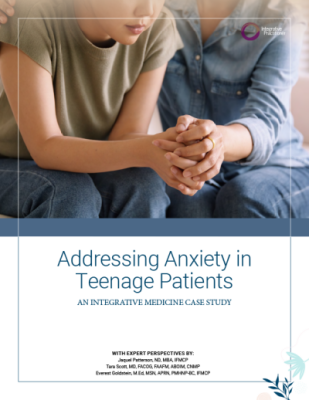Disrupted circadian rhythmicity associated with mood disorders, study says
Circadian disruption is reliably associated with various adverse mental health and wellbeing outcomes, including major depressive disorder and bipolar disorder, according to a new study published May 15 in The Lancet Psychiatry.
Lower relative amplitude might also be linked to increased susceptibility to mood disorders, according to the study, which was funded by the Lister Institute of Preventive Medicine.
Researchers examined associations between objectively assessed circadian rhythmicity and mental health and wellbeing phenotypes, including lifetime history of mood disorder.
Using data collected from a large cohort of people wearing wrist accelerometers, Laura Lyall, PhD, of the Institute of Health and Wellbeing at the University of Glasgow, U.K., and colleagues reported that a one-quintile reduction circadian relative amplitude was associated with increased risk of lifetime major depressive disorder (odds ratio [OR] 1·06, 95% CI 1·04–1·08) and lifetime bipolar disorder (1·11, 1·03–1·20).
In addition, the study found that the degree of circadian rhythm disruption was associated with greater mood instability (1·02, 1·01–1·04), higher neuroticism scores (incident rate ratio 1·01, 1·01–1·02), more subjective loneliness (OR 1·09, 1·07–1·11), lower happiness (0·91, 0·90–0·93), lower health satisfaction (0·90, 0·89–0·91), and slower reaction times (linear regression coefficient 1·75, 1·05–2·45).
These associations were independent of demographic, lifestyle, education, and overall activity confounders, researchers said.
To conduct the study, researchers assessed who were U.K. residents aged 37–73 years were recruited into the U.K. Biobank general population cohort from 2006 to 2010. Researchers used data from a subset of participants whose activity levels were recorded by wearing a wrist-worn accelerometer for seven days. They then derived a circadian relative amplitude variable, which is a measure of the extent to which circadian rhythmicity of rest–activity cycles is disrupted.
In the same sample, researchers examined cross-sectional associations between low relative amplitude and mood disorder, wellbeing, and cognitive variables using a series of regression models. Their final model adjusted for age and season at the time that accelerometry started, sex, ethnic origin, Townsend deprivation score, smoking status, alcohol intake, educational attainment, overall mean acceleration recorded by accelerometry, body-mass index, and a binary measure of childhood trauma.
Previous studies have used subjective reports of activity and sleep patterns, but the availability of accelerometer-based data allowed for the derivation and analysis of new, objectively ascertained circadian rhythmicity parameters.




















SHARE